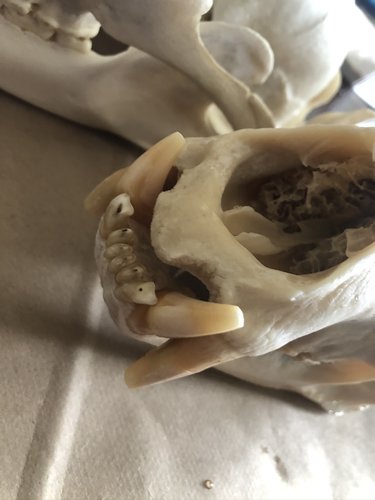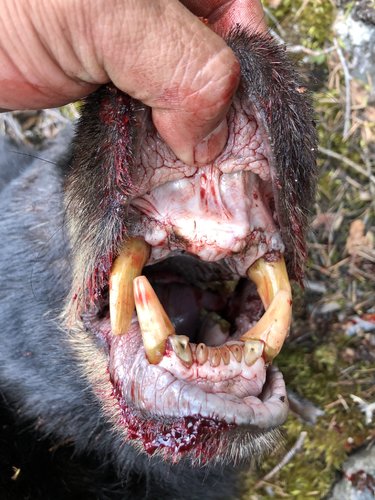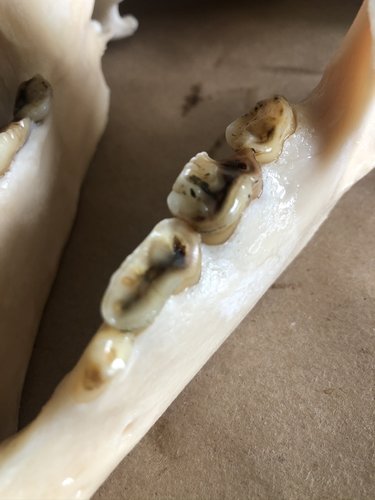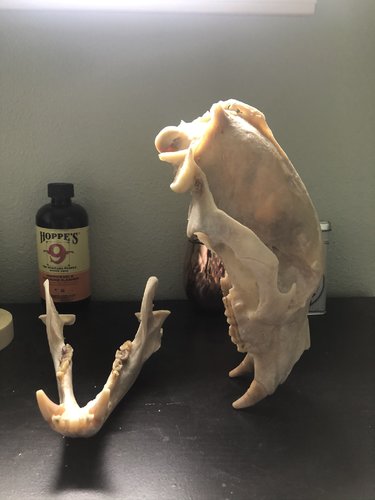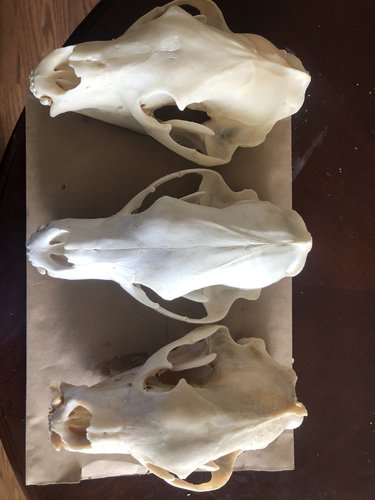I am blown away at how many variables each bear demonstrates just in skull configuration. My last bear has rough growths all over making the skull rough to the touch. All of his front teeth on his upper lid are missing with the exception of his canines. Most of your bigger boars have a ridgeline flange to support their jaw muscles. Some have short snouts and some have exaggerated long snouts. With trapping foxes,coyotes,skunks,mink and raccoons I feel like the variance between those species is mostly “size”. The identifiable characteristics between bear skulls is significant. The skull is not always consistent with body size. 